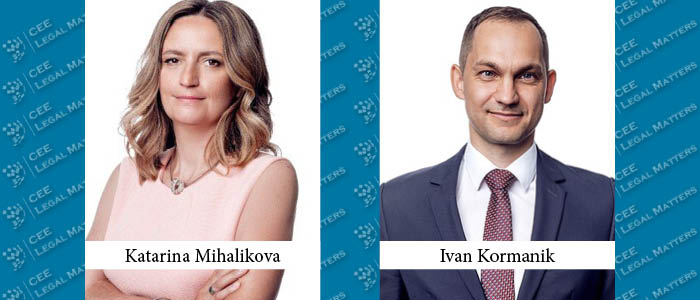As we outlined in our earlier article, the option of a demerger by means of a spin-off (odštiepenie) is a significant innovation introduced into the Slovak corporate landscape by the Transformations Act.
Under the former regulation (previously covered in the Commercial Code), a spin-off, which entails the possibility of carving out only some of the assets, rights, and obligations and moving them to other legal entity without the divided company ceasing to exist, was not available. In a spin-off scenario, the shareholder of the recipient company either keeps the shareholding in the recipient company or receives financial proceeds. The shareholder of the divided company:
- keeps shareholding in the divided company,
- receives shareholding in the recipient company,
- receives financial proceeds, or
- a combination of any of the above applies.
This type of corporate restructuring was eagerly awaited by many businesses.
Alternatives
The transactions that might aspire to achieve a similar effect as spin-offs are either impossible to employ, less effective, or more expensive. These include:
- Division (rozdelenie, rozštiepenie), in case of which:
- it is necessary to precisely specify the assets and contracts of the company which are divided into at least two companies, and
- the divided company ceases to exist;
- Transfers of individual assets and contracts, in case of which
- the consent of the contractual counterpart is sought, which can be cumbersome in more complex businesses, and
- there is a risk that such transfers will, in case of dispute, be reclassified as the sale of part of an enterprise (predaj časti podniku);
- Sale of part of an enterprise, in case of which:
- the transferring company has to keep independent accounting for the respective part of the enterprise which is to be transferred;
- all assets and legal relationships related to the part of the enterprise are transferred (i.e. the transfer of part of the enterprise concept limits the freedom of entrepreneur to decide which assets and legal relationships related to the “part of the enterprise” shall not be transferred);
- the buyer has to pay the purchase price to the transferring company, i.e., not to its shareholder, and the transferring company has to pay income tax.
The ability to identify specific assets and legal relationships, to easily take them out of the divided company without that divided company ceasing to exist, and to transfer them into either an existing or newly founded company is groundbreaking news. It allows the clean separation of assets, lines of business, or contracts, whether for business or regulatory reasons, which may, on certain occasions, be easier and more transparent than the above options.
Admissibility of Spin-off
The following limitations apply to spin-offs:
- Spin-offs are available for limited liability and joint-stock companies only;
- The recipient company has to have the same legal form as the divided company;
- A spin-off cannot occur if any participating company is in the process leading to winding up (bankruptcy, restructuring, liquidation, etc.), while certain exceptions may apply (especially if such a spin-off is approved by the bankruptcy administrator or court);
- If due to spin-off any participating company would end up in crises (hroziaci úpadok);
- Spin-off cannot occur if the divided company’s equity (vlastné imanie) is of lower value than its share capital on the decisive date.
Transformation Project
The basis of each transformation is so-called “transformation project”. The success of a spin-off relies heavily on the clarity of this transformation project, which defines the assets and liabilities being transferred. Should the transformation project lack precision, assets may become subject to a dispute and end up in shared ownership among the divided and successor companies, leading to potential business complications.
In the case of divisions, a decisive date may be set, i.e. the date from which the acts of the company being divided are deemed, for accounting purposes, to have been carried out on behalf of the recipient company. This date can be set retroactively, back to the first day of the accounting period in which the draft of the transformation project is drawn up. In the case of a spin-off, the above applies only to the assets and liabilities subject to transfer to the recipient companies.
Cross-liability in the case of divisions
The divided company is, under the law, providing a guarantee to the creditors for the liabilities transferred in the course of spin-offs up to the value of net assets (čisté obchodné imanie) transferred to the recipient company, and the divided company is liable for the liabilities transferred to the successor companies.
The Transformations Act also contains joint and several liability of the recipient companies, which is an important instrument for the protection of creditors. The creditor may demand full performance of an obligation from any of the successor companies, and the performance of the obligation by one of them will extinguish the obligation of the others. Regressively, the successor companies’ claims are subsequently settled in the proportion in which the net assets of the divided company have passed to them.
In addition, the creditors may under certain circumstances request that the recipient company provides collateral to ensure enforceability of the receivable.
Conclusion
The introduction of spin-offs marks a significant step forward in corporate restructuring within the Slovak legal framework. While offering opportunities for efficient asset transfer and clean separations, spin-offs also pose challenges and require careful consideration of transformation projects and liability implications. Nonetheless, the ability to selectively transfer assets and liabilities without the dissolution, presents a promising avenue for businesses seeking strategic restructuring while maintaining operational continuity.
By Katarina Mihalikova and Ivan Kormanik, Partners, Majernik & Mihalikova, PONTES
















